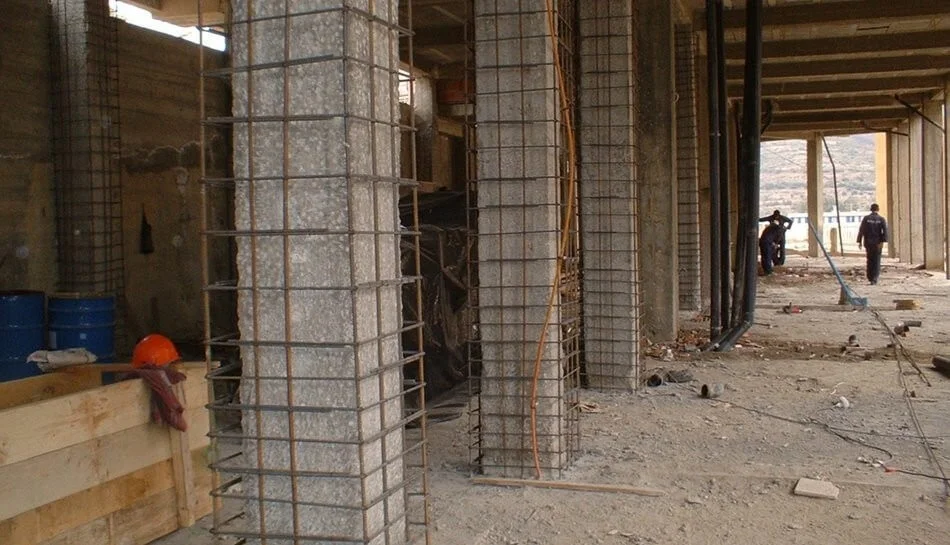Micro-concrete jacketing has become one of the most preferred methods for strengthening weak or damaged structural components. In India, where aging buildings and infrastructure demand practical solutions, this method offers a reliable way to enhance the load-bearing capacity of structural members. Whether you’re dealing with columns, beams, or slabs, micro-concrete jacketing provides a cost-effective and efficient option. Below are the top 12 reasons why Micro-Concrete Jacketing in India should be your go-to choice.
1. Enhances Structural Strength Effectively
The strength of existing structures is considerably increased by micro-concrete jacketing. By using this technique, the cross-sectional area of slabs, beams, and columns is increased. It evenly redistributes loads and withstands further deformation or stress. This is crucial for buildings that exhibit wear and tear or age-related degradation. This technique prolongs the life of old buildings in places like Delhi and Mumbai, where they are still in use. Proper jacketing significantly increases the overall load-bearing capability.
2. Minimal Disruption to Occupants
Both commercial and residential buildings are frequently completely occupied in India. Buildings cannot be evacuated for repairs. Micro-concrete jacketing makes it possible to strengthen with minimal disruption. It doesn’t involve moving or heavy machinery as demolition or reconstruction does. This makes it the perfect technique for upgrading homes, workplaces, hospitals, and schools. The procedure is a viable choice for continuing civil maintenance work because it is non-intrusive.
3. Ideal for Beams, Columns, and Slabs
Every important structural element can benefit from the application of micro-concrete jacketing. It efficiently strengthens load-bearing columns. This treatment also helps overburdened slabs and beams with bending cracks. The procedure is adaptable enough to handle several issues within a single framework. Because of its many uses, engineers frequently suggest this technique for jacketing services for beams, slabs, and columns. It is remedial as well as preventive.
4. High Bond Strength with Old Concrete
Bond compatibility is one of the main issues in structural repair. The adhesive qualities of micro-concrete jacketing are outstanding. It blends in perfectly with the concrete surfaces that are already there. This guarantees that no weak spots or holes will appear during the restoration. The strength of the link between the new and old layers is very important. It enables the restored portion to function as a single, cohesive unit. This degree of bonding lowers the likelihood of subsequent cracks or delamination.
5. Time-Saving and Faster Execution
In India, construction projects frequently have strict deadlines. Without sacrificing quality, micro-concrete jacketing expedites structural rehabilitation. Micro-concrete mixtures that are pre-packaged make application easier and require less work. Neither considerable surface preparation nor complex formwork are required. It is, therefore, perfect for assignments with a tight deadline. Fast project turnover and occupancy are made possible by efficient execution. Depending on the size, contractors can finish large-scale jacketing in a few days.
6. Cost-Effective Alternative to Reconstruction
Complete reconstruction is not financially feasible in many regions of India. A far more cost-effective alternative is micro-concrete jacketing. It increases how long old constructions can be used. It eliminates the need for demolition and reconstruction. The cost of labor and materials is much lower. Because of this, it appeals to builders on a tight budget, particularly in the public and private sectors. It’s a wise investment that yields long-term gains without requiring a significant outlay of funds.
7. Suitable for Seismic Retrofitting
India is located in several earthquake-prone areas. For public safety, structural integrity is essential. Micro-concrete jacketing increases lateral strength and ductility. It assists older buildings in fulfilling seismic design specifications. Stronger beams and columns are better at absorbing seismic energy. In the event of a tremor, this lowers the chance of structural failure. Schools, hospitals, and multi-story buildings in seismic zones are commonly retrofitted with it. The technique aids in adhering to the most recent IS codes.
8. Easy to Apply in Constrained Spaces
The distance between structural components is often small in Indian constructions. For these kinds of circumstances, micro-concrete jacketing is ideal. It doesn’t require a lot of workspace or big equipment. Even in confined spaces, employees can manually put on the jacket. Additionally, it is perfect for retrofitting internal columns, balconies, and basements. The substance fills gaps efficiently and flows freely. It is appropriate for modest projects and dense urban buildings due to its simplicity of use.
9. Compatible with Reinforcement Additions
If there is structural damage, more steel might be required. New reinforcement bars can be integrated, thanks to micro-concrete jacketing. When fixing compressive elements, engineers can increase tensile strength. The section is far stronger as a result of this hybrid approach. It gives structural repair techniques flexibility. Under load circumstances, the steel and micro-concrete combination performs admirably. It enables tailored fixes for various issues within the same framework.
10. Long-Term Durability and Protection
In Indian climes, durability is crucial, particularly given the humidity and exposure to the monsoon. Micro-concrete jacketing provides weathering and corrosion protection. It shields inlaid steel against chemical and water damage. This leads to fewer maintenance cycles over time. The substance is designed to produce long-lasting effects. It gives structures that are subjected to environmental deterioration an additional line of protection. For many years to come, this guarantees structural stability.
11. Boosts Load-Bearing Capacity Without Adding Much Weight
Overloading outdated foundations is a frequent worry. Without significantly increasing dead weight, micro-concrete jacketing fortifies the structure. In contrast to conventional concrete, the material is lightweight. However, it has remarkable mechanical strength. It is perfect for restoring high-rise and load-sensitive structures because of this equilibrium. Neither stability nor safety are jeopardized. When structural improvement is required without changing the building’s basic design, engineers advise it.
12. Increases Property Value and Structural Safety
Lastly, asset value and safety go hand in hand. Buildings strengthened with micro-concrete jacketing have a higher resale value. Properties that are kept up are more likely to attract buyers. This results in a higher return on investment for commercial developers and housing organizations. A building with structural reinforcement is safer and has a lower liability. Additionally, structurally repaired assets are preferred by insurance firms. It’s a clever method of blending economy, style, and safety.









